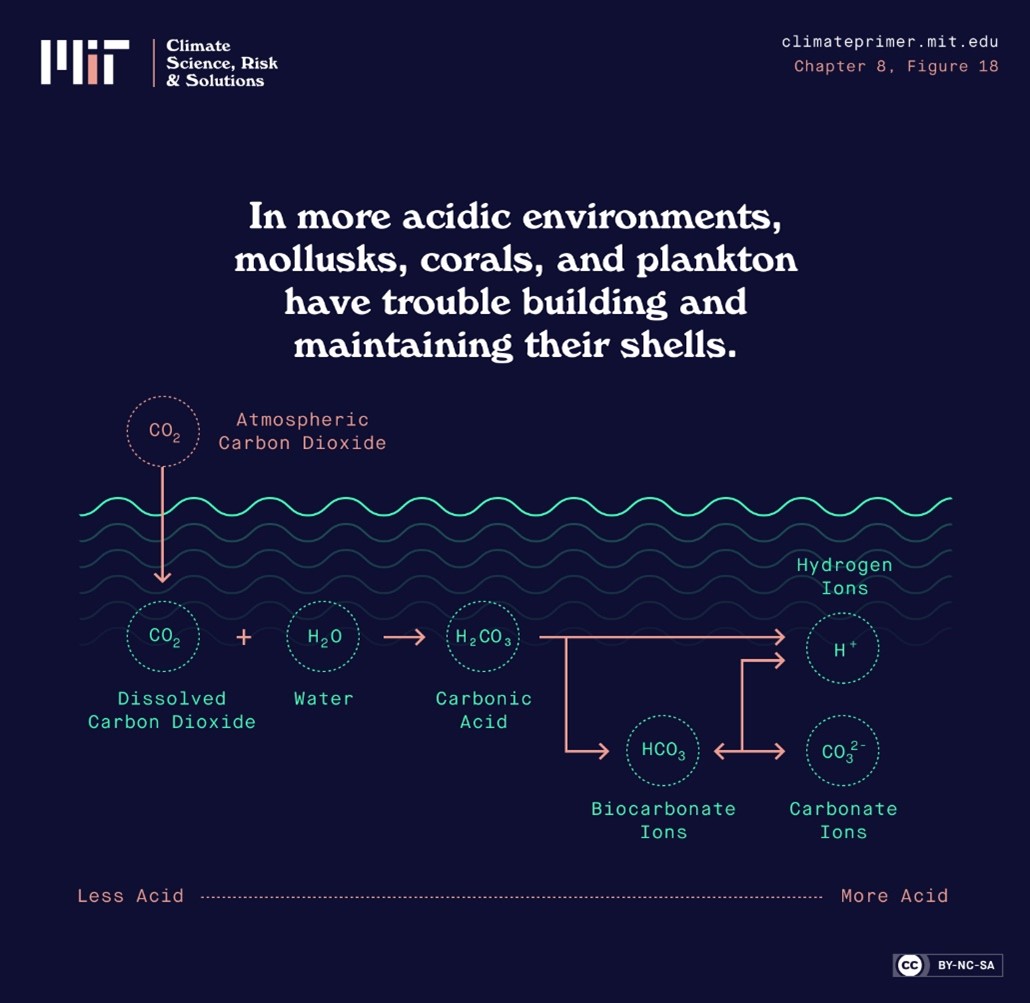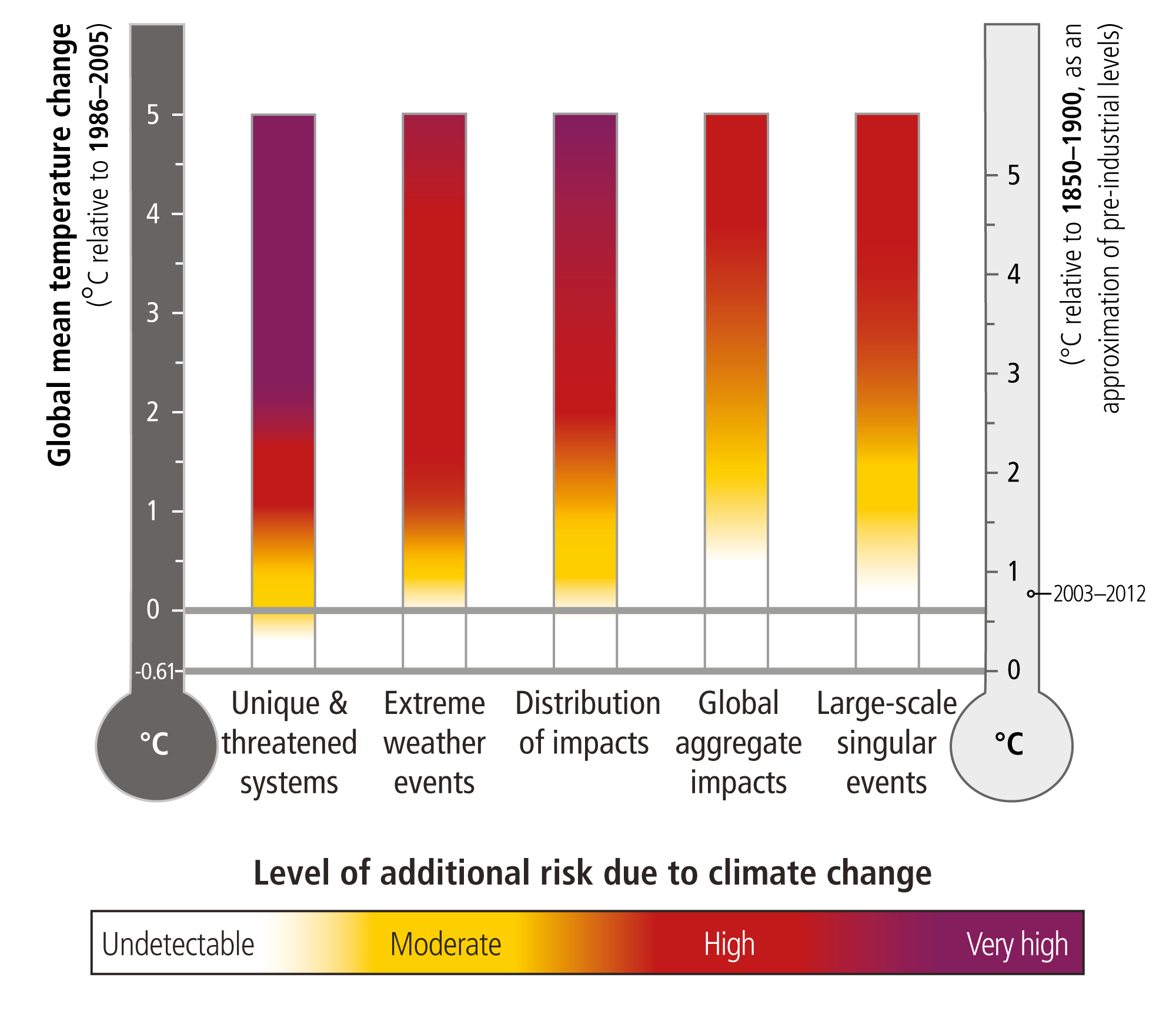Positives and negatives of global warming
What the science says...
| Select a level... |
 Basic
Basic
|
 Intermediate
Intermediate
|
 Advanced
Advanced
| ||||
|
The harmful impacts of climate change, which have the ability to alter ecosystems and expose society’s vulnerabilities, significantly outweigh any beneficial impacts that may arise. |
|||||||
It's not bad
"By the way, if you’re going to vote for something, vote for warming. Less deaths due to cold, regions more habitable, larger crops, longer growing season. That’s good. Warming helps the poor." (John MacArthur)
The Pros and the Cons
Our current climate crisis poses an existential threat unlike any that our species has experienced before. Emerging evidence suggests that the rapid increase in global average temperature will wreak havoc on not only our climate system, but also our day-to-day lives. In 2019, global average temperature was 0.99 °C (1.78 °F) above the 1951-1980 average temperature. While we are already seeing the effects of a changing climate, scientists warn of significantly worsening impacts if warming is not kept below 1.5 °C. These severe impacts can include substantial land and sea ice loss, ocean acidification, changes in ocean circulation, and shifts in weather patterns which ultimately lead to food and water shortages along with economic and social unrest.
There are also ways in which society may benefit from a warming climate. Reduced sea ice will open more passageways for ships and will allow the poles to be more accessible. A warmer climate may grant certain areas, especially northern latitudes, longer and earlier growing seasons. Warmer winters mean less cold-induced deaths. Increased carbon dioxide levels may help vegetation to flourish for a greener world. Unfortunately, though, many of these benefits are short-term and are greatly overshadowed by the negative impacts that climate change brings.
Land and Sea Ice Loss
Ice is an important part of the global climate system because it reflects a large amount of solar radiation while also moderating global sea level. As ice melts, the less reflective ocean surface is exposed and instead of radiation being reflected, it is absorbed and causes more ice melt. This is called a positive feedback system, which is what makes polar regions so sensitive to climate change. High northern latitudes are experiencing rapid warming due to polar amplification causing land and sea ice to melt at an increasing rate.
Measurements show that the central Arctic has seen a decrease of over 50% in sea ice thickness along with an average decrease in September sea ice extent of 130,000 per year from 1997 to 2014. If warming exceeds 1.5 °C, models predict Arctic summers to eventually become ice free. In Antarctica, ice melt varies greatly with net ice loss in some regions and net ice gain in others. One of the biggest areas of concern here is the West Antarctic Ice Shelf (WAIS). The WAIS has been seeing a rapid decrease in mass with a loss of up to 200 Gigatons (that is 200 billion metric tons) per year.
Other ice formations such as snow cover and frozen soil called permafrost have also been melting at staggering rates. From 1967 to 2012, June snow cover in the Northern Hemisphere has decreased at a rate of 11.47% per decade. In response to this, permafrost layers have warmed and thinned. For up-to-date ice loss measurements, the National Aeronautics and Space Administration (NASA) has a website that provides graphics and numerical data. Substantial loss in both land and sea ice can result in changes in weather, ocean thermohaline circulation, and sea level rise due to reduced solar radiation reflection and more water being added to the oceans.
Sea Level Rise
Paleoclimate data suggests sea level has risen and fallen many times throughout Earth’s past. Land ice formation and melt lead to a rise or drop in sea level. Sea level is also dependent on thermal expansion, the process of water taking up more space as its temperature increases. About three million years ago, when carbon levels were similar to what they are presently and there was less ice coverage, global average sea level was roughly 80 feet higher than what we see today.
With atmospheric carbon levels continuing to rise, global average temperature increasing, and consistent ice melt, climate scientists predict we will experience considerable sea level rise in the future. In fact, we already are. Using tide gauge and satellite altimeter data, the Intergovernmental Panel on Climate Change (IPCC) concluded that the global mean sea level rose 0.19 meters from 1901 to 2010 with a rate of up to 3.2 millimeters per year. Climate models predict that the rate of sea level rise will increase to 16 millimeters per year by 2100 but will not be a uniform global event. With an estimated 70% of coastlines affected and about 40% of the world’s population living within coastal regions, a sea level rise of just a couple meters will displace billions of people and dramatically alter their day-to-day lives.
Ocean Acidification and Circulation
The atmosphere and ocean are constantly exchanging properties such as temperature, water, and even gases. Thus, as we put more carbon dioxide into the atmosphere, we are also putting more carbon dioxide into the ocean. This exchange of carbon is essential to both parties but when the ocean receives too much carbon, a process called ocean acidification takes place through the chemical process shown in Figure 1. Research predicts that by 2100, the ocean will become 15-17% more acidic compared to current pH levels. A more acidic ocean would be a lethal environment to most marine species which, in turn, will greatly impact humans, especially those who depend on our oceans for food.
As our present-day climate rapidly changes, a disruption in ocean circulation is also becoming an area of great concern. Thousands of years ago during times of abrupt climate change such as the Younger Dryas, it is believed that oceanic thermohaline circulation was slowed or halted thus altering both oceanic and atmospheric behaviors. Today, an important mechanism involved in this circulation is what scientists refer to as the Atlantic Meridional Overturning Circulation (AMOC). Atmospheric temperatures greatly impact thermohaline circulation (hence “thermo”) therefore a warming climate may alter ocean circulations such as AMOC. According to the IPCC, rising greenhouse gas emissions are likely to cause an 11% deceleration in AMOC by the end of the century. The main purpose of ocean circulation is to transport heat, water, and nutrients between the equator and poles. A cessation in this can cause numerous unwanted effects such as changes in marine ecosystems, large-scale convection, air-sea interactions, and wind patterns as the climate system tries to compensate for the loss of vital transport.

Figure 1 illustrates the process of ocean acidification.
Weather Events
Climate change not only affects temperatures, it also affects cloud formation, tropical cyclone development, and everything in between. Civilization has long depended on precipitation events for water and agriculture. Patterns in these events were fairly predictable during a steady climate but a changing climate ushers in much variability which may lead to long-term droughts or floods. If warming reaches 1.5 °C above pre-industrial levels, the IPCC predicts that there will be a 100% increase in flood risk in areas such as the United States, Asia, and Europe. Relatively dry regions such as the American Midwest are expected to face more frequent and intense droughts.
Monsoon systems are likely to impact larger regions and intensify while precipitation related to El Nino Southern Oscillation is expected to increase. Since 1970, the North Atlantic has seen surges in tropical cyclone intensity and climate scientists predict that there will likely be more frequent and intense storms in the future. It is important to note that although climate models suggest these shifts in weather events, scientists believe these predictions are subject to change, but are still likely to happen, due to the numerous other factors that affect the development of meteorological events. As discussed later, these changes in weather events will greatly impact water and food resources.
Tipping Points
One particularly extreme and, frankly, frightening topic that vastly outweighs any possible beneficial impacts is what climate scientists call tipping points. A tipping point is reached when a vital component of Earth’s climate system rapidly changes and enters a new state. In the climate system, a variable will change so much due to the warming climate that it will reach a point, its tipping point, where it is in a completely new state. Climate scientists believe that reaching tipping points in ice melt, ocean circulation, rainforest deforestation, and coral reef bleaching may push the climate system as a whole to a new state. In addition, tipping points do not exist in isolation. They are all interconnected, meaning that reaching one tipping point can trigger another one which, in turn, triggers yet another one.
Food, Water, and Health
The percentage of the world’s population experiencing water scarcity went from 14% to 58% in just the last century. In 2016, roughly 815 million people were malnourished. With much of the world already struggling to access clean water and food, it comes as no surprise that climate scientists are predicting significant losses in crop yield and clean water, due to climate change-induced droughts or floods, along with degradation of human health as a result of the warming climate. Some climate models are suggesting an additional 8% of the world’s population will see a large reduction in water availability in 2021-2040 along with significant changes in food production. Concerns of other health risks such as diseases, air quality-related mortality, and temperature-related mortality are also being raised. The elderly, children, low-income families, and those with pre-existing conditions are among the populations with greatest climate change-induced health risk. Higher temperatures and degrading air quality will allow for increasing cases of diseases such as malaria, respiratory illnesses, and heat exhaustion.
Economics and Social Unrest
Food and water scarcity can lead to higher prices and disputes over access to these necessities; therefore, nations experiencing low food production and poor water quality with an unhealthy population will inevitably experience severe economic distress and social unrest. The changing climate is expected to send up to 16 million people below the poverty line and possibly displace millions from their homelands. Data suggests that hunger, thirst, and economic hardship due to climate change will increase social unrest and conflicts by 14%.
When in Doubt… Cherry Pick
A common climate myth states that climate change may be beneficial. This myth commits the fallacy known as cherry picking, meaning that climate science deniers essentially ‘pick’ out information that could be used to support their argument while simultaneously ignoring scientific facts that prove the opposite. In this case, the myth focuses solely on the few positive impacts of a warming climate which diverts attention away from the mounting evidence that a rapidly warming climate will wreak havoc on all aspects of society.

Figure 2 shows risk severity dependent on global average temperature (°C) above pre-industrial levels (1850-1900).
Conclusion
Scientific research continues to prove that the negative impacts of climate change far outweigh any positive impacts. Our modern-day climate crisis has ushered in a host of problems for society to solve. If reached, a warming of 1.5 °C above pre-industrial levels will cause land and sea ice loss, sea level rise, changes in ocean circulation, ocean acidification, extreme weather events, exacerbation of tipping points, poor human health, and social unrest. Consequently, much of society will be left without food, fresh water, and shelter. But, if we listen to the science, we will have within our power the ability to take action to save not only ourselves, but also our planet.
Last updated on 14 November 2020 by sophia_whitaker. View Archives































 Arguments
Arguments
















































Climate Myth...